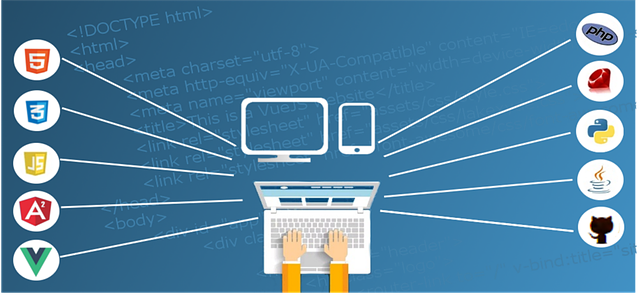
Migrating a website from one hosting provider to another can be a daunting task, but with careful planning and execution, it can be done with low downtime, ensuring the website remains accessible to users throughout the process.
This typically involves transferring all the site’s files, databases, and possibly the domain registration to the new hosting company.
The key is to have a solid migration plan in place which maps out each step of the process, thus minimizing the risk of data loss or extended periods of downtime which could affect the site’s performance and user experience.
Selecting the right hosting provider is crucial as it can have a long-term impact on the website’s operation.
The new host should not only meet the technical requirements of the site but should also provide reliable support during and after the site migration.
It is equally important to time the migration carefully; often, website owners choose to move during off-peak hours to reduce the impact on users.
Once the files and databases are securely transferred, and the domain’s DNS settings are updated, the website should be up and running on its new server.
Most hosting companies now offer tools or services to streamline the website hosting migration process.
However, even with these conveniences, a website owner should always back up their site before proceeding with any migration activity to safeguard against any unexpected issues.
Planning Your Migration
Before embarking on migrating to a new website host, one needs to assess their current hosting setup, select an appropriate new provider, and strategically time the migration to minimize disruptions.
It is also crucial to set up a new hosting
Evaluating Current Hosting
One must critically evaluate their current web hosting company’s performance against their needs.
It’s essential to document the site’s statistics, such as load times and uptime percentages, to ensure these benchmarks are met or surpassed by the new host.
They should also take note of their current hosting services to ensure no functionality is lost during the switch.
Choosing a New Hosting Provider

Selecting a new web hosting company is a balance between meeting technical requirements and staying within the budget.
One should list out the non-negotiable features and compare potential hosts to find the best fit.
It’s advisable to read up on reviews and maybe even test the customer service of the new hosting services to ensure they’re reliable.
Migration Timing and Scheduling
The timing of the migration is crucial.
They should plan the migration during low-traffic periods to minimize the impact on users.
One must also ensure that there’s a clear migration timeline that accounts for all the necessary steps, from transferring files to updating DNS settings.
And don’t forget to communicate the schedule to all stakeholders involved.
Preparing for Migration
Before embarking on a website hosting migration, one must grasp the fundamentals of safeguarding data, readying databases, managing content, and setting up the domain.
Choosing the right web hosting providers is crucial, as they play a significant role in the migration process, ensuring smooth transitions and reliable customer support.
Careful preparation can make the difference between a seamless transition and an ordeal.
Site Backup Essentials
When it comes to backups, ensuring a complete snapshot of the website files and databases within your hosting account is crucial.
Utilize tools like FTP to transfer files and rely on applications like phpMyAdmin to export the MySQL database.
Store these backups in multiple secure locations to prevent data loss.
- Checklist for Website Backup:– Ensure all website files are backed up.
- Export databases via phpMyAdmin.
- Validate backup integrity by checking file sizes and content.
Database Preparation
Database readiness is key. They should double-check and optimize all MySQL databases to prevent compatibility issues post-migration.
Cleaning up any unused data will help reduce transfer times and potential errors during the import process.
- Database Prep Steps:
- Optimize the database structure.
- Clean redundant data to ensure a smooth transfer.
Content and File Management
They need to manage their content and files meticulously.
This involves verifying the integrity of all website files and organizing them for the migration.
Special attention should be paid to media files and code which often are the culprits for migration hiccups.
- Important Aspects:
- Sort and organize files.
- Confirm that content matches between the source and target environments.
DNS and Domain Setup
A critical step is ensuring the domain name points to the new host.
It’s essential to update the Domain Name System (DNS) records to reflect the change.
They should be mindful of the time it takes for these changes to propagate across the internet.
- DNS Configuration Tips:
- Update DNS records with the new hosting details.
- Allow ample time for DNS propagation to avoid unnecessary downtime.
Executing the Website Migration
When it comes to executing a website migration, it’s a multi-step operation requiring careful execution. They’ll need to transfer all the site files and databases, configure the new hosting environment properly, and thoroughly test everything post-migration to ensure a seamless transition. Additionally, it’s crucial to configure the new web host properly to ensure a seamless transition.
Transferring Files and Database
The first task in migrating a website to a new host is to transfer site files and databases.
This generally involves using an FTP client like FileZilla, which can connect to their current server and move files to the new host.
They’ll need the FTP server details, username, and password to access their old server. Once everything is connected, they’ll start to transfer files.
For database migration, they typically export the existing database using a tool like phpMyAdmin, and then create a new database on the new server.
After creating the database, they import the previously exported data. If they’re using MySQL, the process might involve executing SQL queries to ensure data integrity.
Setting Up the Environment
Once files and the database have transferred, they need to set up the new hosting environment to replicate the settings of the old one.
This setup includes configuring domain settings, installing their CMS if one is used, and adjusting PHP and server configs to match the requirements of the website’s software.
A staging environment could be beneficial, allowing them to make adjustments in a safe space that mirrors the live server.
Testing After Migration
After migrating all the components, extensive testing ensures that the new environment is configured correctly and that the website is operating as expected.
They will need to check that:
- Links and images are loading correctly
- The website displays properly across different browsers and devices
- All forms and functionalities are working
- The performance is either improved or at least on par with the old server
Testing might also involve running security checks to confirm the new server has no vulnerabilities.
It’s essential to verify that the CMS and any associated plugins or themes are working correctly, as well.
Post-Migration Considerations
After a website has migrated to a new host, it’s essential they don’t just hope for the best. They need to actively review the site’s functionality, update necessary records, and keep an eye on performance to maintain its SEO value and ensure a seamless transition for users. Choosing a reliable web hosting provider is crucial to guarantee uptime and optimal performance.
Review and Optimization
Once the migration is complete, the first task they tackle is a thorough review of the new site.
They’ll want to crawl the entire site to check for broken links, missed redirects, or any unexpected changes in site structure.
It’s crucial they ensure all the on-page elements are optimized and reflective of the previous site to maintain SEO rankings.
They will often develop a post-launch optimization plan to address any issues they find.
Checklist for Review:
- 404 errors: Make sure there are none cropping up post-migration.
- On-Page SEO: Titles, meta descriptions, and H1s should match the old site.
This is the section we all want to get right. Please get Help of the hosting migration process if you need it. You do not want any down time.
Updating DNS Records
Post-migration, updating DNS records is not just necessary; it’s critical for ensuring that users and search engines are directed to the new site location.
Typically, they’ll update the A record or CNAME to point to the new IP address or hostname.
This can take anywhere from a few minutes to 48 hours to propagate, so it’s something they’ll need to monitor closely.
DNS Update Steps:
- Log into the domain management platform.
- Modify the A record or CNAME with the new host’s details.
- Save changes and wait for propagation.
Monitoring Uptime and Performance
A successful migration doesn’t end with just moving files and databases. They need to actively monitor uptime and performance to ensure there are no hiccups.
Using tools to track the site’s uptime is the best way to ensure users are accessing the site without interruption.
They should also look at the site’s loading speed and response times to ensure that the performance has not degraded as this can impact both user experience and SEO.
Regular follow-up during the initial few weeks post-migration can help catch any unforeseen issues early.
Support and Troubleshooting

When tackling website hosting migration, it’s crucial to address any lingering hiccups and to capitalize on customer support services for a secure and reliable experience. Migrations can affect a site’s functionality, so timely resolution and reliable support are pivotal. Choosing hosting providers that offer strong customer support is essential to handle migration challenges effectively.
Resolving Post-Migration Issues
After a migration, issues like broken links or misplaced content can arise, potentially harming a website’s integrity.
A meticulous review of the site’s status post-migration ensures any discrepancies are identified and addressed. Checklists can be a valuable tool in this phase:
- Broken links: Verify and correct any links leading nowhere.
- Security checks: Ensure all security measures are functioning as intended.
- Performance: Monitor site speed and resolve any new performance issues.
Leveraging Customer Support
Strong customer support from the hosting provider can expedite the resolution of migration challenges.
They should be equipped to handle a variety of migration requests and be a reliable resource throughout the process.
One should expect:
- 24/7 availability: They’re there whenever you encounter a hiccup.
- Knowledge across platforms: Whether it’s a simple blog or an intricate e-commerce site, support should have the expertise to assist.
- Status updates: Clear communication about the progress of any troubleshooting efforts and the overall migration status.
Optimizing for Users and Search Engines
When tackling website hosting migration, one must consider both the user experience and maintaining search engine rankings. It’s a dual-focused approach that ensures visitors won’t bounce due to poor performance, and search results continue to drive traffic and generate leads.
Enhancing User Experience
Migrating a site offers a prime opportunity to improve the site’s user experience. This means faster load times, mobile responsiveness, and intuitive navigation are top priorities.
Each of these elements directly contributes to keeping visitors engaged and reducing bounce rates, which, in turn, supports better ranking in search engine results.
- Speed: Aim for lightning-fast load times to keep users happy.
- Mobile-Friendliness: Ensure the site is fully optimized for mobile devices.
- Navigation: Keep it clean and simple, so users find what they need without hassle.
SEO Best Practices Post-Website Hosting Migration
Post-migration SEO requires careful attention to detail to prevent any negative impact on search results.
One should meticulously:
- Maintain Metadata: Transfer titles, meta descriptions, and alt texts as they are to retain SEO value.
- 301 Redirects: Employ 301 redirects for all changed URLs to pass the ranking power to the new pages.
- Monitor Rankings: Keep a close watch on search engine rankings post-migration to troubleshoot any unforeseen drops swiftly.
Additional Services and Features
When looking into website hosting migration, it’s crucial to consider the additional services and features that can provide value for money and ensure scalability for your growing website needs.
Exploring Managed WordPress Site Options
Managed WordPress hosting plans are a boon for those managing WordPress sites and not inclined to deal with the day-to-day management of their websites.
These plans often include automatic website migration, making the transition seamless. Moreover, they provide essential resources like automatic updates, security measures, and expert WordPress support.
For anyone using WordPress, these managed options significantly lighten the load of website maintenance.
Understanding Hosting Plans and Add-ons
A wide array of hosting plans allows one to tailor resources to their specific needs.
It’s important to understand what comes with a plan—free domain offers and free migration services are common perks.
Add-ons can range from enhanced security protocols to performance boosters. Look for a 30-day money-back guarantee to try services without risk.
Scalability is another crucial feature, ensuring that as your site grows, your hosting plan can grow with it—without breaking the bank.
Choosing Migration Tools and Services
When she’s ready to transfer web hosting, the right tools and services can make or break the process. It’s essential to look for options that match her website’s platform and complexity.
Selecting Plugins and Automation Tools
Plugins can simplify the process significantly, especially for a WordPress site.
Automation tools handle the tedious tasks, like transferring files and databases.
For instance, a migration plugin specifically designed for WordPress can automate the process and minimize errors.
One might look for a plugin that bundles everything needed to migrate a website seamlessly. Services like FileZilla Client could also be handy for manually moving files if that’s her thing.
Here’s a quick list of things she’d want in plugins and tools:
- Compatibility with her website’s platform.
- Support for direct transfers to the new host.
- Ease of use with a friendly interface.
- Backup features to safeguard her data.
Considering Professional Migration Services
Sometimes, bringing in the pros is the way to go. An agency armed with experts offers peace of mind, especially when her site is too complex for simple plugins.
These services often cover end-to-end aspects of hosting migration, from a thorough assessment to post-migration checks.
Features she might look for in a service:
- Experience with her specific type of website.
- A transparent process with clear milestones.
- Support before, during, and after the migration.
Whether she’s a hands-off person wanting the full-service experience or just needs a bit of expert advice, professional migration services can be tailored to fit her needs. She should remember that her website is unique, and so are its migration needs.
